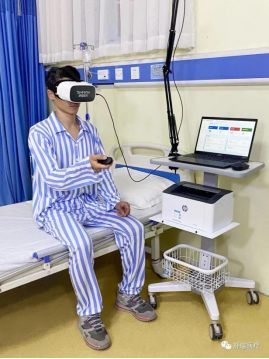Company News
[Mothers Day - Science on Dizziness] Daily dizziness and frequent vertigo cannot be ignored. Could it be caused by the ears?
Mothers Day
Home is a warm harbor, and maternal love is a sweet boat. Whether you are in the north or wandering around the world, on Mothers Day, I deeply miss you and sincerely wish all mothers in the world a happy Mothers Day. Mothers Day is not just Mothers Day, every day is Mothers Day.
Caring for middle-aged and elderly people:
The 2021 census shows that my countrys elderly population over 60 years old accounts for 18.7% of the total population, indicating that China is still in an aging state. Currently, there are more than 88 million households in China with elderly people over 65 years old, accounting for 18.7% of the total population in the country. The proportion of households exceeds 20%, which shows the importance of treating dizziness/vertigo, balance disorders and preventing falls in the elderly. Dizziness/vertigo is relatively common among the elderly. It is usually regarded as a normal age-related phenomenon and is easily ignored by families or individuals. In fact, dizziness/vertigo and balance disorders have seriously affected the quality of life of the elderly because of their The family burden and medical expenses (hospitalization or long-term bed rest at home) caused by falls account for an increasing proportion of chronic diseases year by year. Therefore, strengthening publicity and education and doing a good job in prevention and care of falls in the elderly are of great significance to improving the quality of life of the elderly.
Decreased vestibular function in middle-aged and elderly people:
Vestibular hypofunction, also known as vestibular dysfunction, is most common in middle-aged and elderly people. The main symptom is a disorder of balance function, which may cause dizziness, headache, dizziness, and fear of opening eyes. If the vertigo is particularly obvious, the patient may also experience nausea and vomiting. The patient may remain in one position or even dare not turn over, which affects normal work and life. Sometimes patients experience hearing loss, tinnitus, or even mild ear pain.
What are the symptoms of vestibular hypofunction?
1. Motion hallucination vertigo
Rotational vertigo, linear vertigo, or displacement vertigo: Sudden vertigo is the main manifestation during an acute attack, which is true vertigo. The patient feels that foreign objects are moving or himself is moving, accompanied by nausea, vomiting, and diarrhea. Some patients may experience this condition. Chest tightness, sweating, yawning, increased heart rate, and high blood pressure.
2. Loss of balance, imbalance
Symptoms include posture and gait balance disorders, patients leaning to one side or feeling unsteady when standing or walking, and staggering or feeling drunk when walking.
3. Dizziness, dizziness
Patients often cannot clearly express their discomfort, such as dizziness, lightheadedness, numbness in the head, a feeling of emptiness, a heavy and compressed head, and black eyes.
It may also be accompanied by symptoms of the primary disease, such as deafness, tinnitus, etc.
What diseases are caused?
Conditions that cause vestibular dysfunction include the following:
1. Sudden deafness accompanied by vertigo:
Sudden deafness causes a sudden loss of hearing, accompanied by symptoms of strong dizziness and tinnitus.
2. Menieres disease:
The main symptoms of Ménière are ear fullness, hearing loss, vertigo and tinnitus.
3. Vestibular neuritis:
The main symptoms of vestibular neuritis are severe dizziness without tinnitus and hearing loss. Once vestibular function loss occurs, you should seek medical treatment in time to find out the cause.
How to judge whether there is a problem with vestibular function?
Vestibular function is one of the three main factors that maintain human balance. When there is an obstacle to human balance, such as walking to one side, etc. It is necessary to go to the hospital for a vestibular function test to determine whether there is a problem with the vestibular apparatus function.
How to treat?
1.Drug treatment:
Medication can be used to promote vestibular function recovery
2. Vestibular rehabilitation training:
A more effective method for vestibular hypofunction is to carry out vestibular rehabilitation training, which can be carried out with movements that are within reach. If the patients training effect is not good, he needs to go to a hospital or a professional otology institution for evaluation and be guided by a professional rehabilitation specialist to carry out vestibular rehabilitation. train.
Virtual reality vestibular rehabilitation training device:
Shurui VR vestibular balance rehabilitation training device is based on the traditional vestibular rehabilitation training mechanism and promotes vestibular balance function rehabilitation training through the interaction of vestibule-visual-proprioception.
This equipment uses virtual reality technology to transform the rigid and boring 2D training scenes such as text and pictures in traditional rehabilitation training into 3D training scenes that simulate real life, making the training content more vivid, interesting and entertaining. During the training, It provides patients with interesting interactions and encourages them to participate in rehabilitation training more proactively, thereby greatly improving patients compliance with rehabilitation training.

